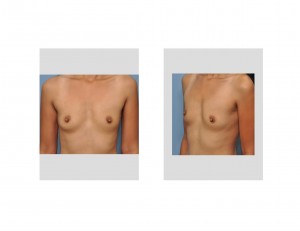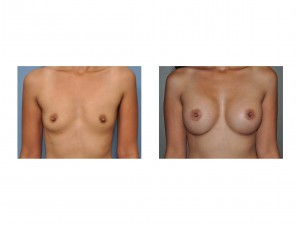Background: Breast augmentation is one of the most common body plastic surgery procedures. At one time in the United States, the ethnicity of most of the women getting breast implants was largely Caucasian. But that has changed dramatically over the past two decades as the melting pot of the United States becomes more mixed and cosmetic changes are becoming accepted by every culture and ethnic group that lives here.
What most women put much of their focus on when considering breast augmentation is two areas of multiple options, incision location and breast implant size. While the size of the the breast is truly in the eyes of the beholder, concepts about it also differ from one culture to another and also change with time and fashion. Ancient Indian sculptures and art depict women with full hemispherical breasts. It is my understanding that such breasts are still in vogue in India especially with women who prefer traditional saris or other ethnic dresses. These breast size concepts may still carry over for some Indian women, but once immersed in Western culture and fashion, these size concepts most likely will change.

In considering breast implant types, she wanted silicone gel as the thought of rippling and future implant deflation was not appealing. In discussing size, she showed pictures from other breast augmentations off of the internet. These showed fuller more spherical breasts that were representative of a C cup size. Of note was the more fuller upper pole look and a breast width that only extended out as far as her lateral chest wall with no overhang. Her natural breast base diameter was 12.0 cms.
The other important consideration was that of incision location. With her darker skin, her incisions were going to hyperpigment no matter where they were placed. With a breast base diameter of 12.0 cms, the corresponding implant size was 375cc. Silicone gel implants can not be easily placed through a more limited transaxillary incision or nipple areolar incision without a lot of skin stretching and traction on the incision. (all which will contribute to scar hyperpigmentation) This combined with a small areolar size pointed towards using a lower breast fold incision.

|
|
|
|

Case Highlights:
1) Breast augmentation should always consider the impact of the woman’s ethnic and cultural background when it comes to choosing implant size and incision location.
2) Most women of Indian ethnicity do not want an implant size that is too big or exceeds the width of their natural breast base.
3) The darker skin pigment of Indian women, and the risk of scar hyperpigmentation, makes the incision selection in the new lower breast fold the best ‘hidden‘ location.
Dr. Barry Eppley
Indianapolis Indiana


